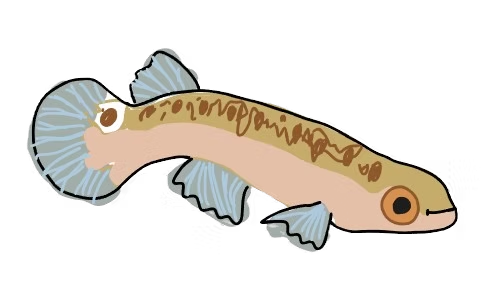When a carbon based life dies and starts decomposing in presence of dioxygen (ex: a branch fallen from a tree), its carbon is released as CO2 (carbon dioxide) in the atmosphere. CO2 being a green house gas (GHG), it then contributes to global warming.

Mangroves
Mangroves forest are a type of intertidal wetland, living at the interface of land and seas. They are typically recognizable by their intricate tangle of roots that make the trees look like they are walking on water. This unique trait is a strategy to endure the daily tides flooding the area.
In a mangrove system, sediments, piling up over time, cover the dead organic matter, preventing its carbon to return to the atmosphere. It will remain in the ground for decades, thus reducing GHG global quantities.
Why are mangroves important?
Mangroves, because of their dense aboveground root system, retain sediments, which has multiple benefits, starting with limiting coastline erosion .

Finally, mangroves provide shelter and food for a lot of organisms, making them essential for a rich biodiversity!

Unique
Mangroves forest are a type of intertidal wetland. Living at the interface of land and seas, their growth is rhythmed by the hydrological movements. They are typically recognizable by their intricate tangle of roots that makes the trees look like they are walking on water. This unique trait is a strategy to endure the daily tides flooding the area.

Host to many
By slowing down water movement and retaining sediments with their roots, mangroves are a great way to stabilize a coastline and reduce erosion. They offer a rich biodiversity of fish, crabs, micro-organisms and others living species, providing food and shelter for many.
